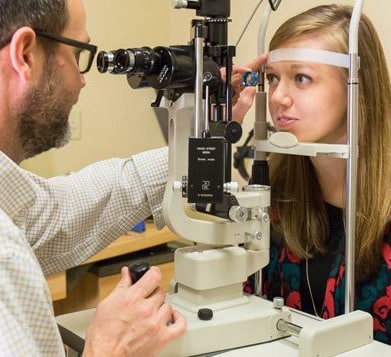Understanding Eye Exam Costs
In healthcare, eye exams are routine check-ups and essential gateways to maintaining and enhancing one of our most vital senses: vision. These exams go beyond the simple prescription updates for glasses or contact lenses; they are critical tools for early detection of eye conditions that could lead to vision impairment or loss. If caught early, conditions such as glaucoma, cataracts, and macular degeneration can be managed more effectively, preserving vision and quality of life.
However, the cost of an eye exam can vary widely, which often surprises many. This variability is influenced by several factors, including the location of the service, the type of eye care professional conducting the exam (optometrist vs. ophthalmologist), whether the exam includes any specialized tests, and, significantly, whether the patient has vision insurance. The absence or presence of insurance can dramatically alter the out-of-pocket costs for the patient. Understanding these costs is crucial for individuals to effectively plan and budget for their eye health needs.
The Importance of Regular Eye Exams
Regular eye exams are pivotal in maintaining eye health and overall well-being. According to data from the Centers for Disease Control and Prevention (CDC), over 12 million individuals aged 40 and above in the United States suffer from vision impairment, including conditions that could have been prevented or mitigated with timely eye care. These statistics underscore the critical nature of regular eye examinations as a preventive measure against vision loss.
Early detection through these exams can identify eye diseases like glaucoma, macular degeneration, and diabetic retinopathy in their nascent stages when most treatable. Beyond disease detection, regular eye exams also monitor vision changes, ensuring that prescriptions for glasses or contact lenses are up to date, thereby reducing the risk of vision-related accidents. For children and adults alike, these exams support health, quality of life, academic performance, and safety. Thus, incorporating eye exams into routine health check-ups is an investment in one’s health, offering a significant payoff in maintaining vision and preventing the progression of eye diseases.
Cost of an Eye Exam Without Insurance
Navigating the cost of eye exams without the cushion of insurance can be a daunting prospect for many. According to estimates from the Vision Service Plan (VSP), the average cost of an eye exam without insurance hovers around $184. However, this figure is not set in stone; it can fluctuate significantly based on many factors.
The location of the eye care provider is one of the primary determinants of cost. Urban centres, where the cost of living is generally higher, may see elevated prices for eye exams compared to rural areas. The type of eye care professional conducting the exam also plays a crucial role in determining the price. Ophthalmologists, who are medical doctors specializing in eye care, might charge more for an exam than optometrists, given their broader scope of practice.
Furthermore, the cost can vary depending on the provider’s setting. Large retail chains or vision care centres often offer eye exams at a lower price due to their ability to leverage bulk purchasing and economies of scale. In contrast, private practices might charge more due to the personalized service and potentially higher overhead costs.
A comparison of costs across different providers reveals a wide range: some large retail vision centres offer essential eye exams starting at $50. In contrast, specialized diagnostic exams in private clinics can exceed $200. This variability underscores the importance of shopping around and inquiring about the specifics of each exam, ensuring that individuals without insurance can find the best value for their eye care needs.
Cost of an Eye Exam With Vision Insurance
The financial landscape of eye exams shifts considerably for individuals with vision insurance, making eye care more accessible and affordable. Vision insurance typically operates on a copay system for services like eye exams, where the insured pays a predetermined fee out-of-pocket, and the insurance covers the remainder of the cost. This system significantly reduces the immediate financial burden on the patient.
For instance, under plans like those offered by Humana Vision, an annual eye exam might only cost the insured a copay of $15 when they visit a provider within the insurance network. The exact copay amount can vary based on the specific vision insurance plan, with some plans offering even lower copays for essential eye exams.
The individual’s insurance policy determines coverage details, including the copay amount. Most vision insurance plans are designed to encourage preventive care, hence covering at least one comprehensive eye exam per year. Beyond the copay, these plans often include benefits towards eyewear or contact lenses, further reducing the overall cost of vision care.
Individuals with vision insurance need to understand their benefits fully, including which services are covered and to what extent. Knowing this information can help maximize the value of their vision insurance plan, ensuring they receive the eye care necessary to maintain optimal vision health at a manageable cost.
Factors Influencing Eye Exam Costs
Several key factors can influence the cost of an eye exam, each contributing to the final price paid by the patient. Understanding these factors can help individuals better anticipate the costs associated with their eye care needs.
Type of Eye Exam
The specific type of eye exam conducted plays a significant role in determining the cost. Basic vision tests, which assess visual acuity and the need for corrective lenses, are generally less expensive. In contrast, comprehensive eye exams that include screening for eye diseases such as glaucoma, diabetic retinopathy, and macular degeneration are more detailed and costlier. Specialized tests can add to the cost, like those for assessing colour vision or the visual field.
Vision Insurance Coverage
Whether or not a patient has vision insurance significantly impacts the cost of an eye exam. Those with insurance typically pay a copay, as their plan outlines, while the insurance covers the remainder. The extent of coverage can vary widely between different insurance plans, affecting the out-of-pocket cost for the insured. Some plans may cover the total cost of a basic eye exam, while others may offer partial coverage for more comprehensive services.
Type of Doctor
The professional conducting the eye exam also influences the cost. Optometrists, who specialize in vision care and eye exams, generally charge less for an exam than ophthalmologists. Ophthalmologists are medical doctors who can perform the same services as optometrists but also specialize in eye and vision surgery and the treatment of more complex eye diseases. Their broader scope of medical training and services can lead to higher costs for an exam.
Moreover, the setting in which the exam takes place can affect the price. Exams conducted in private practices or specialist clinics may be more expensive than those performed at retail vision centres or chain stores, which can offer lower prices due to higher volume and efficiency.
In summary, the cost of an eye exam is not a fixed value but is influenced by the nature of the exam, insurance coverage, and the qualifications of the eye care provider. Patients should consider these factors when planning for their eye care expenses.
Types of Eye Exams
Eye exams are essential for maintaining good vision and eye health, but not all exams are equal. Depending on your needs, an eye care professional may perform various tests. Here’s an overview of the most common types of eye exams:
Visual Acuity Test
The visual acuity test is perhaps the most well-known eye exam, designed to measure the sharpness of your vision. This test involves reading letters on an eye chart from a specific distance. The results are given in a fraction format, such as 20/20, considered normal vision. The denominator increases if your vision is less sharp, indicating a need for corrective lenses.
Visual Field Test
This test measures your peripheral (side) vision and can detect issues that may not be found with a visual acuity test. The visual field test helps identify glaucoma, stroke, brain tumors, and other conditions. You may be asked to describe what you see on the periphery of your vision while focusing on a central point.
Color Vision Test
Color vision tests assess your ability to distinguish between colors and can identify color blindness. During this test, you’ll look at images composed of colored dots and try to identify a shape or number within the dots, which can be challenging if you have a color vision deficiency.
Eye Muscle Test
This exam evaluates the muscles controlling eye movement, ensuring they are strong and can move the eyes correctly in all directions. The test may involve following a moving object or rapidly shifting your gaze between two points.
Glaucoma Screening
Glaucoma screenings measure the pressure inside your eyes, known as intraocular pressure (IOP). High IOP is a risk factor for glaucoma, a condition that can lead to blindness. This screening is often done with a tonometer, which applies a small amount of pressure to the eye with a puff of air or a gentle touch.
Refraction Assessment
A refraction assessment determines your exact lens prescription. By looking through a series of lenses, you’ll indicate which ones make a standard eye chart look clearest. This test identifies refractive errors like nearsightedness, farsightedness, and astigmatism.
Slit-Lamp Examination
The slit-lamp examination allows the eye doctor to examine the structures of your eye under high magnification. It can reveal conditions affecting the cornea, iris, lens, and the space between the iris and cornea. A special dye might be used to highlight any damage or disease.
Ophthalmoscopy
This exam involves dilating the pupils to examine the back of the eye, including the retina, optic nerve, and blood vessels. It’s crucial for detecting diseases such as diabetes and hypertension, which can affect the eyes before other symptoms are apparent.
Each of these tests plays a vital role in a comprehensive eye exam, helping to ensure your eyes are healthy and your vision is as clear as possible.

